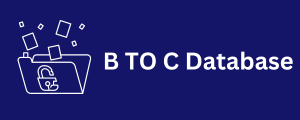If you have a high bounce rate, you may be measuring it incorrectly or you may have a serious problem. In any case, it is important to find out the origin of the problem and correct the situation in order to minimize the bounce rate. What is the best way to do this?
In fact, there is no recipe informing an exclusive formula so it depends on the environment of your business, the reality of your website and other aspects related to the SEO universe .Understand what the bounce rate is, from its concept to the best tips to reduce it by reading our content until the end. Here you will find the information you need to work with this metric so that it becomes a powerful thermometer about the quality of your content .
What is the bounce rate?
One of the most relevant metrics of Google Analytics and the SEO environment , the bounce rate consists of a percentage that measures the number of user visits to a web page without accessing other publications on the site. In more direct and harsh words, it measures the number of visits in which users left the website by the same way they accessed it , without interacting with other content .
How much lack of interest, isn’t it? Unfortunately, this can occur due to a mismatch between visitors’ content needs and website or blog posts . When this happens, a fairly obvious reaction is generated: upon identifying that their information demands will not be met, the visitor leaves the site/blog and migrates to the competition.
Likewise, abandoning a page can be caused by a bad browsing experience and this is directly linked to the design of the website. However, these are not the only factors why a site can have a very high bounce rate . For example, if you have a blog or “single page” website , it is likely that when you enter Analytics, we will be scared. Even for this type of page, a bounce rate of approximately 80% is expected.
How to calculate the bounce rate of a website?
Based on the concept WhatsApp Number Data of bounce rate and the reasons that explain its consideration, we conclude that to calculate this ratio we must divide the number of visitors who have not interacted with the content by the total number of visits to a certain URL. Thus, its formula implies:Tr = Yes (users without interaction) / Tv (total visits)Despite being a simple procedure, the comparison with a reference standard often generates many doubts because, after all, how can we know if the number is positive or negative?
Look at some aspects that you should take into account to identify if the result is satisfactory: Number of pages on your website, in the case of a landing page, the rate will be high because there is nowhere else to go. You publish respecting a periodicity so you educate your audience to consume new content as soon as it is uploaded to the blog.The relevance of keywords or third-party links can affect SEM and/or SEO strategies. If the rate is very high, check how the content spreads on other sites and channels.
4 key techniques to improve bounce rate
1. Access your content as a user
First of all, you B To C Database must get rid of the biased gaze of the creator and observe the quality of the content and design of your website or blog objectively.
Evaluate the points that you think should be improved and look for ways to optimize the positive aspects.
2. Speed up navigation
You must ensure that people quickly find the content they need. To do this, produce content that delivers what they promise in ads or social media posts.
Likewise, it is recommended that you carry out usability tests to verify how easy and intuitive it is for users to navigate your site or blog.
3. Align keywords and content
Use the keywords relevant to the content proposal. For example, if your content refers to caring for a pet’s diet, insert words referring to this topic.
In fact, an excellent way to create publications with the right keywords is to know your buyer persona and understand what topics they like the most.
4. Include powerful calls to action
Call to Action or CTAs are vital to guide users to complete the action you propose.







